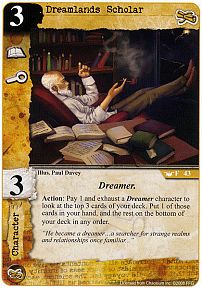The
Dreamer
by
John Nephew
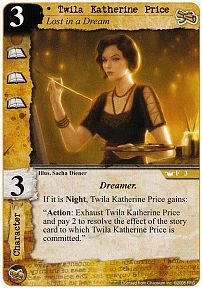
The
Dreamer
by
John Nephew

| Dreamer abilities | - | Dreamer magical items | - | The dreamer in the campaign |
| Dragon 132 | - | - | - | Dragon |
Beyond the Gate of Dreams:
A peculiar sort of
prophet: the dreamer NPC
by John Nephew
The dreamer semiclass is a group made
up of human,
elven,
and half-elven beings
who have the ability to manipulate their
subconscious minds. With practice and
experience, they can exercise considerable
control over their own minds and bodies
and, to a lesser extent, over the minds
and
bodies of others. At higher levels of
skill,
they are also able to project their minds
to
communicate with others as well as to
manifest themselves elsewhere in intangible
form, and they can even glimpse the
possible future. It is up to the DM to
decide whether or not dreamers in his
campaign would be appropriate as player
characters.
Dreamer Advancement and Ability Table
| Level | Cumulative XP
(as sole class) |
XP Cost
(as second class) |
Abilities gained (weeks of training) |
| 1 | 0 | 0 | Lucid dreaming (0) and normal sleep (0) |
| 2 | 500 | 500 | Deep sleep (1) and light sleep (1) |
| 3 | 1,000 | 1,000 | Awareness sleep (2), detect mind (l), and empathic sleep (2) |
| 4 | 4,000 | 2,500 | Detect lie (2), feign death (2), and penetrate disguise (3) |
| 5 | 9,000 | 5,000 | Sleeper communication (3) and read alignment (2) |
| 6 | 19,000 | 10,000 | Lesser prophecy (3) and regenerative sleep (5) |
| 7 | 44,000 | 25,000 | Sleep control (1) and sleep suggestion (3) |
| 8 | 94,000 | 50,000 | Illusion (4), telepathy (3), and suggestion (3) |
| 9 | 194,000 | 100,000 | Mass suggestion (4) and projection (5) |
| 10 | 294,000 | 100,000 <> | Prophecy (special) |
Dream Travel: 5 passengers set sail that day for a 3-hour tour...
Dreamer skills are similar to psionics
(though psionic and dreamer powers
never occur in the same person), and their
presence is determined in a similar manner.
For any human, elven, or half-elven
character possessing an unmodified score
of 15 or higher in intelligence, wisdom,
or
charisma, the base chance of possessing
dreamer powers is 2% for elves and 1%
for humans and half-elves. This base
chance is modified as follows: For every
point in any of the three abilities above
16,
a percentage point is gained; for every
point below 12, half a point is lost;
the
total chance is then rounded up and may
never be below 1%. For example: Grondel
the Possible Prophet has these scores:
intelligence 10, wisdom 13, and charisma
18. Being human, he has a base 1%
chance, modified upward by 2% for his
charisma and down by 1% for his intelligence.
Thus, he has dreamer potential on
a roll of 01-02 on 1d100.
The dreamer is a semiclass because its
members may use these powers independently
of another class or with another
class; either way, the dreamer does not
act
like a conventional class or subclass.
With
combinations of classes, it does not act
like
normal dual- or multiclassed characters.
Even among elves and half-elves, a dreamer
may have only one other class.
Human NPCs with dreamer as their sole
class have 2-7 hp and fight only as zerolevel
fighters. Elven and half-elven characters
who do not choose a second class
have 1-10 hp and fight as 1st-level fighters;
since elves and half-elves cannot be zerolevel
(except as cavaliers), they are effectively
dreamer/fighters incapable of
progressing beyond 1st-level fighting
skill,
but they are otherwise treated as humans
without a second class. Regarding the
Dreamer Advancement and Abilities Table,
"Cumulative XP" applies to those with
dreamer as their sole class. Experience
is
acquired and accumulated just as with
other classes, but dreamers do not
improve in hit points or attacks; when
their accumulated experience has reached
the required amount, they are allowed
to
develop the skills of that level. The
saving
throws of dreamers without another class
are made as clerics of equal level. They
may use any armor and weapons; elves
and half-elves have weapons of proficiency
as per 1st-level fighters and cannot
acquire any more; humans are equally
inept (i.e., as zero-level fighters) with
all
weapons. Dreamers without another class
begin with two nonweapon
proficiency
slots and gain another every two levels
(see the DSG, pages 23-29).
Dual-classed dreamers primarily operate
according to their nondreamer class, having
the hit points, attacks, armor and
weapons limitations, saving throws, and
special abilities thereof. They also have
the
abilities of 1st-level dreamers and realize
that they can develop more dreamer skills.
Upon receiving experience at the end of
an adventure, they decide whether to put
all of it in their primary class or improve
their dreamer abilities. If the first
option is
chosen, then the experience is added to
the primary class?s total, possibly permitting
training and advancement in that
class. If the second option is chosen,
the
"XP Cost" (on the Dreamer Advancement
and Abilities Table) of the next dreamer
level is deducted from the amount accumulated
in the adventure and, if necessary,
from the primary class?s total, as long
as the primary class?s total does not
then
go below the minimum for the level the
character is at in the primary class (or
below zero in any case). If not enough
experience points are available to allow
this subtraction, the recent experience
is
simply added to the total of the primary
class. If the experience-point cost is
met,
the dreamer may advance to the next level
after training, and the experience points
are erased.
Training is essentially the same for
dreamers with or without another class.
Those who have another class must train
for that class first if a level is to
be gained
in it as well.
For advancement as dreamers, a certain
number of weeks of training is required
according to the skills to be learned
(refer
to the Dreamer Advancement and Abilities
Table and the ability descriptions that
follow). This time must be spent in developing
the talents by resting, meditating,
lucid dreaming (see ability explanations),
and experimenting. No adventuring is
allowed.
For example: Ikelam the Visionary is a
magic-user/dreamer (levels 7 and 5,
respectively) with 67,000 experience
points. After returning from an adventure
to the Lost Caves of Tulud, she acquires
another 7,000 xp and decides to even out
her enchanting and dreaming skills. The
experience-point cost for a 6th-level
dreamer is 10,000; that requires the 7,000
new points and also reduces her primary
(magic-user) experience to 64,000. She
is
now ready to train, and decides to learn
lesser prophecy first, which takes three
weeks. Desiring a change of scenery, she
then takes a few weeks off to visit her
hometown of Mulwen. On the way, she
destroys a band of highwaymen. Ikelam
receives no experience, however, because
she hasn?t finished her training. After
another five weeks of learning, she masters
regenerative sleep and is established
as 7th-level magic-user/6th-level dreamer.
There are no set level titles for dreamers,
but persons of this sort often adopt an
addendum to their name to reflect their
special nature. Common titles taken are
Augur, Clairvoyant, Dreamer, Medium,
Mystic, Prophet, Seer, Soothsayer, Tephramancer,
and Visionary.
Most sages
surmise that the dreamer
ability was originally granted by one
or
more deities, and it is not unknown for
characters to be granted one or more
dreamer skills by a deity. The power is
usually permanent, but may not be passed
on to subsequent generations. Such
bestowals may be a reward, a punishment,
or (rarely) a whim. It is common for there
to be a stipulation on the power(s): perhaps
it only works at certain times (such
as the new moon), with certain preparations
(such as after the killing of an albino
rat),
or anything the DM can think of to
make it fun (such as a character cursed
to
feign death whenever alone in the company
of a member of the opposite sex; or, in
order to utilize the power, the character
must eat a certain quantity of a certain
food, such as four
oranges). An example
from Greek mythology of one cursed with
prophetic ability was Cassandra, who
could see the future; the catch was that
no
one would believe her. This ability bestowal
may open new horizons for DM fun
(bounded by careful discretion) and NPC
role-playing.
Awareness
sleep
Level 3, two weeks of training
This state is a special combination of
light, normal, and deep sleep. The dreamer
is awakened as per deep sleep, regains
HP as with normal sleep, but
remains sensitive to the environment;
the
subconscious carefully collects and
records all sensory information except
sight. Thus, once the dreamer awakens
after a designated time, he clearly remembers
the sounds, odors, temperatures, and
any movement of himself as if he had been
awake with his eyes closed. It takes an
hour to enter awareness sleep and
another hour to emerge from it; sensory
data from these transitional times cannot
be clearly recalled. If forcefully awakened
before the designated time, the sensory
information is lost (unless the dreamer
also has sleep control, as noted below).
Awareness sleep can be sustained for up
to 24 hours (including the two hours
required for entrance and emergence).
Deep sleep
Level 2, one week of training
A dreamer in this state will only awaken
from a strong, radical stimulus -- such
as
having a bucket of cold water poured on
his head. Otherwise, sleep continues until
a designated time (as with normal sleep).
A
dreamer in deep sleep regains hit points
at
the rate of 1 hp every four hours, and
he
may sustain this state for up to 20 hours
at
one time.
Detect
lie
Level 4, two weeks of training
In range and effect, this power is similar
to the fourth-level clerical spell of
the
same name, though it is not reversible.
The dreamer attunes himself to the subconscious
of the subject to detect if a
statement is a falsehood compared to what
the subject actually knows or thinks he
knows (i.e., only intentional untruths
can
be noted). It may be used once every six
hours.
Detect mind
Level 3, one week of training
This power detects minds (defined here
as a consciousness having semi- or better
intelligence) within a range of 30? per
level
of the dreamer. The dreamer may concentrate
specifically on a single object, creature,
or area -- for example, detect mind
would reveal the presence of a mind in
an
object used as a magic
jar, or that a being
was comatose or under the effects of a
feign death spell. Note that the body
of a
creature using an astral spell or astral
projection, or that of a projected dreamer,
does not have a mind within it. The power
may be used once every four hours for
as
long as it is concentrated on.
Empathic
sleep
Level 3, two weeks of training
This state is similar to awareness sleep,
but it is receptive to the minds of others
and is attuned to the emotional environment
as opposed to the physical one. Specific
thoughts cannot be detected, but
general feelings (antipathy, respect,
happiness,
frustration, etc.) and a general identification
of individuals (by personality, not
appearance) is possible. Empathic sleep
may be sustained for up to 10 hours
(including two hours total for entrance
and emergence; the time is predesignated).
After eight hours in this state, the dreamer
also heals 1 hp. A dreamer in empathic
sleep can be awakened and lose (that is,
never consciously know) information as
per awareness sleep.
Feign
death
Level 4, two weeks of training
This is the same as the third-level magicuser
spell of the same name, except that it
can only be used by the dreamer himself.
It may be used once a day.
Illusion
Level 8, four weeks of training
This power is basically treated as a
spectral forces spell. The dreamer directly
places images and other sensory data in
the subject?s mind, overriding those actually
perceived by the subject?s senses. The
dreamer may project the illusion into
the
minds of up to two beings for each of
the
caster?s experience levels. Subjects must
be
within 60? of the dreamer. An illusion
can
be created once per day and lasts as long
as the dreamer concentrates on it.
Lesser
prophecy
Level 6, three weeks of training
From a state of light sleep, a dreamer
may receive a lesser prophecy at most
once in every 12-hour period. It may be
utilized to derive the effects of one
of the
following spells: augury
(second-level
clerical spell), divination
(fourth-level
clerical spell), portent (first-level
clerical
spell), or predict weather (first-level
druidic
spell). Range, duration, and effect are
as
per the spell chosen, but no material
components
are required in any case.
Light sleep
Level 2, one week of training
A dreamer is likely to use this ability
most often during adventuring. The
dreamer will doze until awakened by a
noticeable environmental change (sunrise
or sunset, getting rained on, a change
in
temperature, etc.) or by an irregular
noise
or silence, and is much more sensitive
than normal sleeping beings. For example,
a thief who fails to move silently is
still
unlikely to wake up most creatures, but
a
dreamer in light sleep will awaken immediately.
The character may designate when
to wake up, as with normal sleep. Hit
points are regained at the rate of 1 hp
per
10 hours of light sleep. It can be sustained
for up to 10 hours plus the level of the
dreamer.
Lucid dreaming
Level 1, no training required
This is simply a state in normal sleep
wherein the dreams are controlled by the
dreamer. Lucid dreaming is not unique
to
dreamers, but through it the dreamers
realize and develop their powers.
Mass
suggestion
Level 9, four weeks of training
Mass suggestion can affect more than
one subject, as per the sixth-level illusionist
spell of the same name. The dreamer
may utilize it once per day (see suggestion).
Normal sleep
Level 1, no training required
This is like any normal person?s sleep.
Dreaming is normal for the most part and
of no particular significance. Hit points
are
regained at the rate of one every eight
hours of normal sleep. Dreamers are able
to sustain normal sleep for up to 15 hours
plus a number of hours equal to the level
of the dreamer. They may either be awakened
like anyone else, or may decide
exactly when they want to wake up before
they go to sleep.
Penetrate
disguise
Level 4, three weeks of training
With this power, the dreamer is able to
detect the presence of material or magical
disguise. This is done by finding out
what
the subject knows he actually is. A discrepancy
between this and what the dreamer
sees indicates something amiss. For example,
an assassin may be disguised as a
noblewoman or may have been polymorphed
into a frog, but the assassin?s
subconscious knows what she actually is.
The subject is allowed a saving throw
vs.
spells to block the dreamer from viewing
his mind. Note that a character afflicted
by
certain forms of insanity (schizoid, megalomaniacal,
delusional, schizophrenic, hallucinatory,
or hebephrenic) can give the
dreamer confusing signals. A hebephrenic
person, for example, would subconsciously
perceive himself as being a child,
though the person may be 40 years old.
Unless the dreamer knows the nature of
the character?s malady, the condition
might be mistaken for a disguise. Penetrate
disguise may be used once every
eight hours.
Projection
Level 9, five weeks of training
This ability allows the dreamer to create
a visible but noncorporeal projection
of
himself. The dreamer controls the projection
as if it were his body, although it does
not have physical limitations; like certain
undead, it can walk through solid objects,
over water, or whatever. Normal weapons
will not harm the projection, but being
struck by an enchanted weapon instantly
forces the dreamer?s mind back to his
body. The projection gives the dreamer
a
full sensory range in the area it is sent
to.
The dreamer?s projection may exist on
the Prime Material plane, or may directly
enter the plane of Shadow, Astral
plane,
or Ethereal plane. Through the Ether,
the
Positive and Negative Material, Elemental,
Para-elemental, and Quasi-elemental
planes may be accessed. Movement to
these planes is virtually instantaneous,
since it is the mind that is traveling.
On the Astral plane, however, a mind
adopts a physical form with a silver cord.
Movement and so forth is as if the dreamer
were utilizing the clerical astral spell
(refer to the Manual of the Planes
for
details). An outer-plane destination may
be
reached, and upon entering another plane
the mind returns to having a visible,
noncorporeal
form.
To create a projection, the dreamer first
enters deep sleep, then slips into a semicomatose
state (cf. astral spell) as his mind
leaves the body and is projected elsewhere.
The projection may be maintained
as long as the dreamer desires, until
forced back to the body (by being struck
as if AC 0 by a magical weapon, or by
a
dispel magic spell cast within range of
the
projection and successful vs. the dreamer?s
level), or until the comatose body is
disturbed
(as if to be awakened from deep
sleep). This power may be used no more
than once per week.
Prophecy
Level 10, special training time
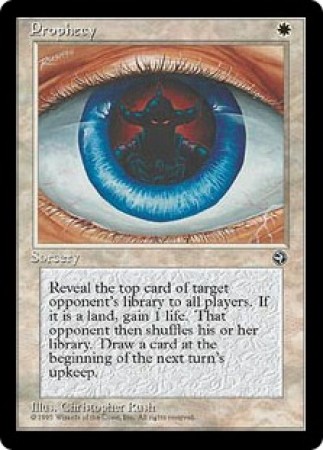
This ability is properly known as tephramancy,
which is the ability to predict the
future through dreams. It is the most
difficult dreamer skill and potentially
the
most powerful; certainly it is the best
known. Lesser dreamer abilities, such
as
the three modes of sleeping, work within
the dimension of the dreamer?s mind;
median skills, from detect mind to mass
suggestion, open the dreamer to the minds
of others; higher still is projection,
which
allows the dreamer?s mind to actually
manifest in physical dimensions, albeit
noncorporeally. Tephramancy is the greatest
discipline: It opens the dreamer?s subconscious
to the dimension of time,
effectively encompassing all of existence.
It becomes apparent that prophecy is
difficult to set strict rules for, and
what
follows are little more than guidelines.
The
greatest responsibility lies with the
DM,
who must be exceptionally cautious.
Always carefully consider short-term and
long-term influences on the characters
and campaign.
For effective use of this, it is necessary
to arbitrarily define some aspects of
the
AD&D®
game universe. The past is considered
set and unchangeable. The future is a
myriad of possibilities and likelihoods.
The
present is where the action is. The possibilities
of the future are converted to the
concreteness of the past.
After amassing 100,000 experience
points (or accumulating 294,000 as a sole
class), the dreamer may begin training
for
prophecy. After two weeks of work, the
dreamer will have a percentage chance
of
acquiring the ability equal to the sum
of
his intelligence and wisdom. If aided
by a
mentor who already has prophecy, 10% is
added to the chance. If the roll fails,
the
dreamer may continue to train, and each
week thereafter the chance increases 3%
and the dice are rolled again. This reflects
the difficulty of developing the talent,
and
that some dreamers are simply able to
develop it faster.
In preparation for utilizing this power,
each dreamer has a unique series of
actions to perform. One may need to burn
and inhale the smoke of a certain rare
incense or herb. Another may need to
surround herself with rose-scented
candles
while meditating. The DM is to devise
the requirements for each dreamer
achieving this skill. Generally, preparations
take around half an hour. The dreamer
then enters deep sleep (in a carefully
prepared and comfortable area) for three
hours.
Tephramancy makes the dreamer's subconscious
virtually omniscient in viewing
the past and present (notably excepting
objects and persons magically hidden)
and
the possibilities of the future. From
all of
this, the subconscious mind compiles the
most likely future, and delivers it to
the
tephramancer in the form of a dream of
the predicted series of events. This allows
characters to influence their fates.
For example, Tharset the All-Seeing is
concerned about his friend, the Arch-
Mage Carsyll, who is going to travel
through a nasty patch of wilderness. In
his
prophetic dream, he sees Carsyll
ambushed by a small army of orcs. Carsyll
slays them, but is so weakened that he
falls prey to a demon lord with a grudge
against him. From this, Tharset can warn
Carsyll, who may not have realized the
demon?s grudge; Carsyll can travel with
more careful preparations in anticipation
of the ambush, put off departure for a
day, or take a different route. Of course,
any of those choices may contain a fate
just as bad.
One nasty thing is bound to come up at
some point: two dreamers prophesying
about the same event. In the previous
example, suppose the demon itself
employed a dreamer. Theoretically, the
second dreamer would have seen that
Tharset would warn Carsyll, and the
demon would then take the route that
Carsyll would then be prophesied to take,
but Tharset would see this and warn
Carsyll, and so the vicious circle continues.
In a case of two dreamers viewing the
same person, area, or series of possible
events within 12 hours of each other,
the
one with more experience would receive
the prophecy and the other would not
(which tells the less experienced tephramancer
that someone else is interested in
the same thing). In cases of more time
difference, the later prophecy is received,
and might in effect nullify the first
prediction.
The DM ought to consider the attendant
rivalry among high-level dreamers.
Tephramancy may be employed only
once per day. The DM should make the
materials for it quite expensive, therefore,
to prevent overuse. If the DM feels a
dreamer is abusing his powers, it is possible
to cause an occasional inaccurate
prophecy, provide a foe with a periapt
of
protection from prophecy (see below),
or
(in extreme circumstances) revoke the
power for a time. If there is protest,
it isn?t
too difficult to find reasons, even if
it is
that "the gods are offended by the misuse
of your talents" --
possibly a divinity or
servant could even tell the dreamer personally
(by dream, of course) that his
prophecy power is suspended.
Read alignment
Level 5, two weeks of training
The subject of this power is allowed a
saving throw; if the save fails, the dreamer
is able to access the subject?s subconscious
to reveal the subject?s code of values
and
morals ? that is, alignment. Read alignment
only works on creatures of semi- or
greater intelligence (those driven by
more
than mere instinct) and may be used once
in every 12-hour period. Note that this
power may reveal much more than a
simple alignment; potential (though not
actual) treachery or faithfulness can
also
be determined, as could other factors
at
the DM?s option.
Regenerative
sleep
Level 6, five weeks of training
In this state, the dreamer?s brain ?closes
down? and enters a suspended state. All
mental activity is subconscious and entirely
directed toward commands for cell
regrowth, as directed during at least
three
hours of trancelike meditation (somewhere
between consciousness and lucid
dreaming), without interruption, immediately
before entering regenerative sleep.
As such, there is little or no noticeable
brain activity, although there is heightened
cell activity for regrowth (2 hp regained
per hour). Breathing is deep and steady,
and heart rate is accelerated.
After up to eight hours of regenerative
sleep, the character returns to consciousness
and feels extremely hungry. He is
then able ? and will need ? to eat a full
day's quota of food (three full meals),
feeling as though it were one meal. The
dreamer can reenter regenerative sleep
again after three hours of meditation
if he
wishes to.
No more than five sequential periods of
regenerative sleep may be safely performed.
At that point, the character must
spend at least three days in normal activity
and sleep to restore depleted stores of
essential nutrients and thus allow the
cells
to readapt to normality. If regenerative
sleep is continued without the three-day
recovery time, healing gains are reduced
by half. Furthermore, there is a 10%
cumulative chance for each additional
regenerative sleep period of the regrowth
going out of control. After the dreamer?s
maximum number of hit points is reached,
tissues will continue to grow, becoming
tumors. At this point, 1 hp per day is
lost
as the tumors destroy the body?s functioning.
Only a cure disease, heal, limited
wish, wish, or alter reality spell will
reverse this condition; other curative
spells will not heal lost, hit points
or stop
the degenerative condition.
Sleep
control
Level 7, one week of training
This is not a new skill as such, but an
improved proficiency in previously
acquired dreamer abilities. It allows
the
dreamer to do the following:
1. While asleep, the dreamer may
change his basic sleeping mode (normal,
light, deep), as decided beforehand. For
example, the dreamer may choose to
spend four hours in deep sleep and then
change to light for six more.
2. In awareness and empathic sleep, the
dreamer can retain a small amount of
conscious control, so that he is aware
of
the information being gathered and
stored; he may choose to cause himself
to
awaken from those modes on the basis of
the data (such as detecting antipathy
in
empathic sleep). If he emerges from either
sort, of his own will or not, a dreamer
who has acquired sleep control will not
forget the information gathered. When
this semiconsciousness is utilized, hit
points are healed at the rate of 1 HP
every 12 hours.
3. In regenerative sleep, the dreamer
can
pay some attention to the healing if he
goes beyond the dangerous time, which
reduces the cumulative chance of uncontrolled
growth to 5% per regeneration
period, but at the same time prevents
limb
regeneration (i.e., 1 hp per hour healing
is
the only effect).
Sleep
suggestion
Level 7, three weeks of training
This is similar to sleeper communication
but is effective only at half the range
(that
is, five miles per level of the dreamer).
The
subject must be asleep. Except for the
duration (one hour per level of the dreamer),
it is the same as the third-level magicuser
spell suggestion, and may be used
once every 24 hours.
Sleeper
communication
Level 5, three weeks training
From deep sleep, the dreamer may
utilize this ability to communicate with
the
consciousness of another sleeping creature.
If the contacted being is having normal
or lucid dreams, the dreamer appears
in the dream and can communicate in it.
If
the contacted being is not dreaming (arbitrarily
an 80% chance if not known), then
the contact has a 10% chance of awakening
him, terminating sleep. In the communication,
which is made through
dreams, the sender and receiver may
appear in any form they wish while
communicating. Both will clearly
remember the communication
when they awaken.
Sleeper communication has a range
of 10 miles per level of the dreamer and
may be
sustained for a time proportional to the
level
of the dreamer and inversely proportional
to
the distance; in other words, the
duration in minutes equals the level of
the
dreamer times 100, divided by the number
of miles between the contacting minds.
For example, a 7th-level dreamer communicating
with a being 50 miles away could do so
for 14
minutes. A dreamer may only attempt communication
once every eight hours, but has no such
limit on
receiving communication.
More than one dreamer can contact a
mind at the same time. A favorite tactic
of
high-level dreamers is to communicate
inside the mind of a third party, either
to
allow longer communication time or to
permit communication despite considerable
distance. The third party usually
wakes up thinking that he has had an
illogical dream or that he was being contacted
by gods or spirits.
S
u g g e s t i o n
Level 8, three weeks of training
This power is an improvement on sleep
suggestion, but neither the dreamer nor
the subject need be asleep. The suggestion
does not need to be spoken; it is telepathi-
cally placed in the subject?s subconscious.
In range, duration, and general effect,
it is
otherwise the same as the third-level
magic-user spell of the same name. Dreamers
below 10th level may use suggestion
once per day; 10th-level dreamers may
use
it twice in a day.
Telepathy
Level 8, three weeks training
This is an improved form of sleeper
communication and is treated as that
power except that neither the dreamer
nor subject needs to be asleep. It otherwise
has the same limits on range and
usage.
Dreamer magical
items
The following six enchanted devices
imitate, protect against, or enhance
dreamer abilities. The DM is encouraged
to use different forms than those listed
(such as a ring of communication) for
variety.
Coronet of communication
This thin circlet of precious metal
affords the wearer the dreamer abilities
of
sleeper
communication, suggestion, and
telepathy, each once per day.
XP Value: 2,000
GP Sale Value: 20,000
Crystal
of awareness
A rock-crystal shard
of this nature
enables the user
to perform the following
dreamer skills:
awareness
sleep, detect
mind, detect lie,
empathic sleep, penetrate
disguise, read alignment,
and sleep
control. These powers
may each be used
once per day, except
awareness and
empathic sleep,
which may be used once
per week. If the
user is a dreamer, this
ring also confers
the ability to remember
sensory information
going into and out of
awareness and empathic
sleep.
XP Value: 2,500
GP Sale Value: 20,000
Jewel of projection
By staring at this magnificent gem and
entering a trance, the user is able to
create
a projection
of himself. It is otherwise
identical to the dreamer power, and may
be used once per week.
XP Value: 4,000
GP Sale Value: 35,000
Periapt of prophecy
protection
This small device renders the bearer
invisible to attempts of prophecy:
any
prophecies in which the bearer would be
involved are constructed as if the bearer
did not exist. The periapt also prevents
sleeper communication, sleep suggestions,
suggestion, and telepathy, and makes the
individual immune to mass suggestion.
XP Value: 1,500
GP Sale Value: 10,000
Potion of regeneration
A sip of this fluid gives the taster a
tingling
feeling. Imbibing the whole dose
causes the drinker to enter regenerative
sleep
immediately, for eight hours.
XP Value: 500
GP Sale Value: 4,000
Talisman of dreams
This item, which can take any of several
forms (usually a small object or piece
of
jewelry adorned by curious runes)
gives
the bearer the power of prophecy. Any
dreamer will recognize it for what it
is,
and will be able to use it fully. A nondreamer
can be taught how to use it by a
6th- or higher-level dreamer. This takes
two months minus one day per point of
intelligence and wisdom of the learner;
otherwise, the tephramancy will occur
at
random, allowing a 5% chance anytime
the bearer is asleep of prophetic dreams
of anything important to happen soon.
Controlled or randomly, this foresight
can
operate once per week.
XP Value: 4,500
GP Sale Value: 45,000
The dreamer in the campaign
Obviously, a dreamer has skills that can
be used in dungeon
&& wilderness adventures,
but a more important and unique
niche can be developed in the larger campaign
setting. Two ideas follow, mostly
applying to NPCs; these are generally
usable when the dreamer reaches 10th
level and either plans to retire from
play
or seeks new horizons.
The Royal Prophet: As the Magician
is an
important court functionary, even more
prominent can be the Personal Soothsayer
of the monarch or noble ? especially if
the dreamer has spell-casting talents.
Several scenarios can come from this.
It
is not entirely disagreeable to hold such
a
position (it is possible to be as high
as
upper-upper class in service of a great
monarch), and to do so could be the goal
of a dreamer of humble origins.
Of course, not everyone likes court
intrigue, but perhaps the one whose court
it is wants the dreamer?s services even
if
they have to be obtained by force. Forewarned
by his tephramancy, the dreamer
could seek the protection of PCs (possibly
paying in services), or be a player character
trying to avoid "employment" or
escape from forced servitude.
The Oracle:
This position especially
appeals to cleric/dreamers. A respected
and famous prophet can establish himself
somewhere (perhaps a temple, holy
shrine, ancient ruin, or any out-of-the-way
place; the more famous and respected the
prophet, the more difficult to get there)
and live comfortably off offerings left
in
return for the telling of fate. Just being
so
far away and legendary also increases
one?s reputation greatly. Though it can
be
boring for a PC to be an oracle, a wilderness
adventure to see an oracle can be a
challenge. The oracle may also demand
a
quest as payment or merely to prove
worthiness for an audience. The prophecy
itself can be a challenge. Dreamers who
are themselves uncertain as to what their
dreams mean tend to give answers that
can be interpreted in a variety of ways.
And, of course, the compensation for the
prediction can lighten the characters
of
that load of treasure they accumulated
on
the way there.
1. SUBCLASS = n/a
2. SOCIAL CLASS MINIMUM =
3. ABILITY SCORE MINIMUMS
STRENGTH =
INTELLIGENCE =
WISDOM =
DEXTERITY =
CONSTITUTION =
CHARISMA =
COMELINESS =
4. POSSIBLE RACES & MAX. LEVEL ATTAINABLE =
5. MULTI-CLASS POSSIBILITIES =
6. HIT DIE TYPE =
7. MAXIMUM NUMBER OF HIT DICE =
8. SPELL ABILITY =
9. ARMOR PERMITTED =
10. SHIELD PERMITTED =
11. WEAPONS PERMITTED =
12. OIL PERMITTED =
13. POISON PERMITTED =
14. ALIGNMENT =
15. STARTING MONEY =
16. WEAPON PROFICIENCIES =
17. NON-PROFICIENCY PENALTY =
18. NON-WEAPON PROFICIENCIES =
19. STARTING AGE =
20. COMBAT =
21. SAVING THROWS =
22. MAGIC ITEMS =
<add hf1 and hf2>
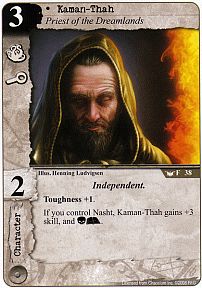
zb.

19.

18.
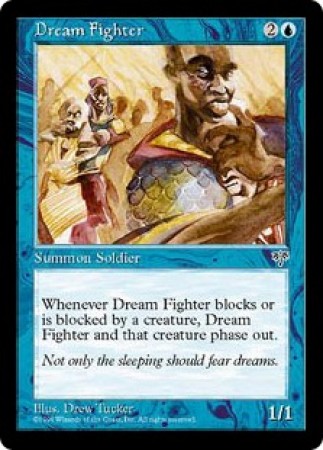
17.
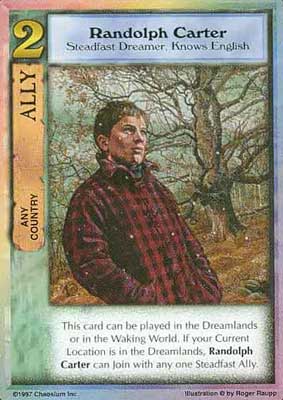
16.
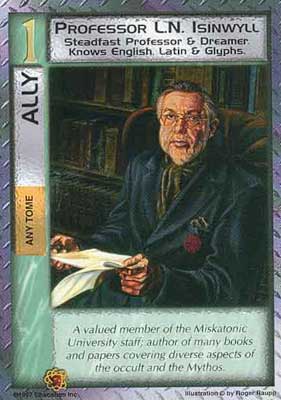
15.
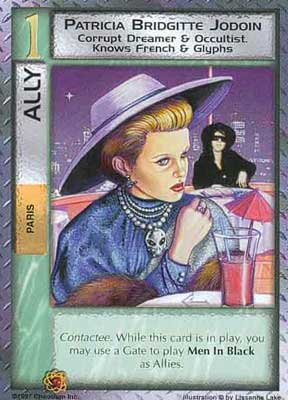
14.
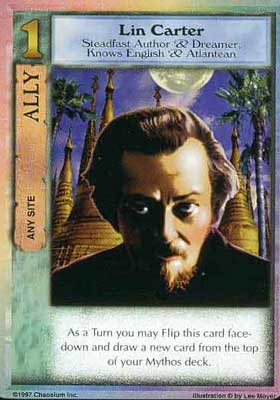
13.
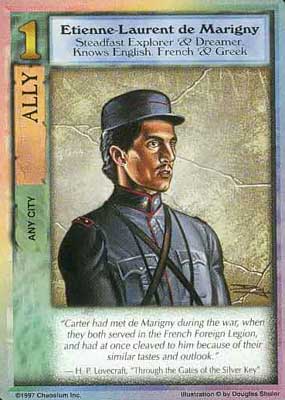
12.
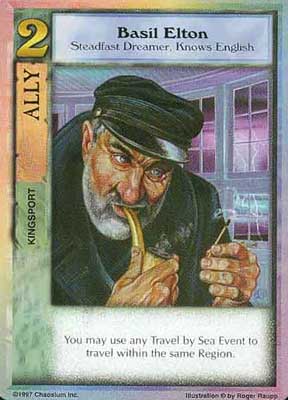
11.
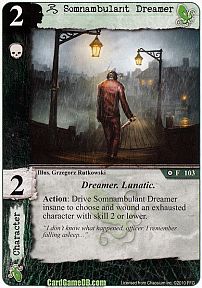
10.
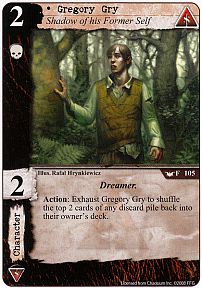
9.
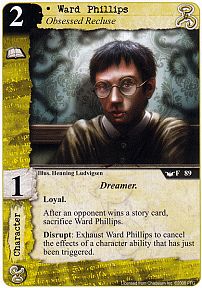
8.

7.
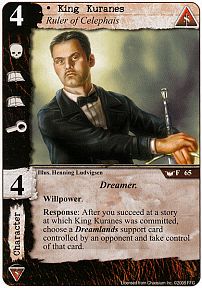
6.
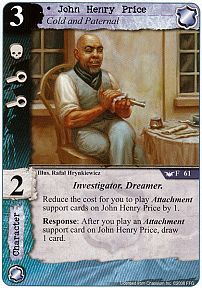
5.
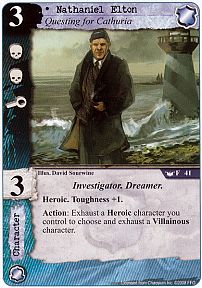
4.
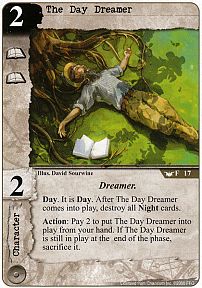
3.
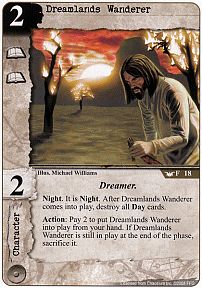
2.
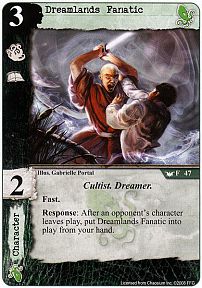
1.
